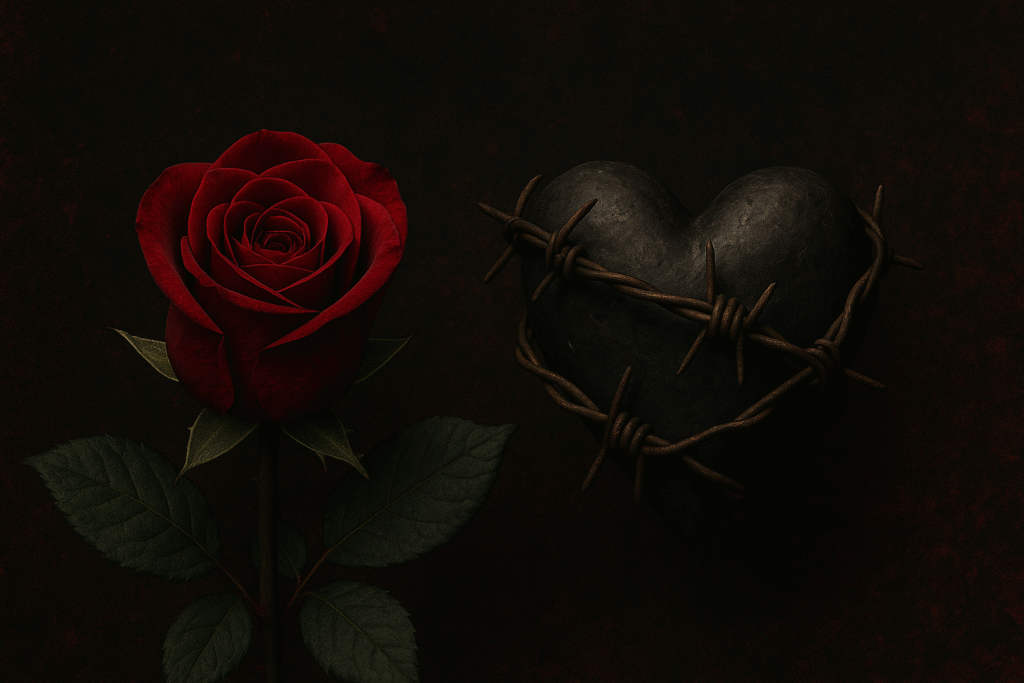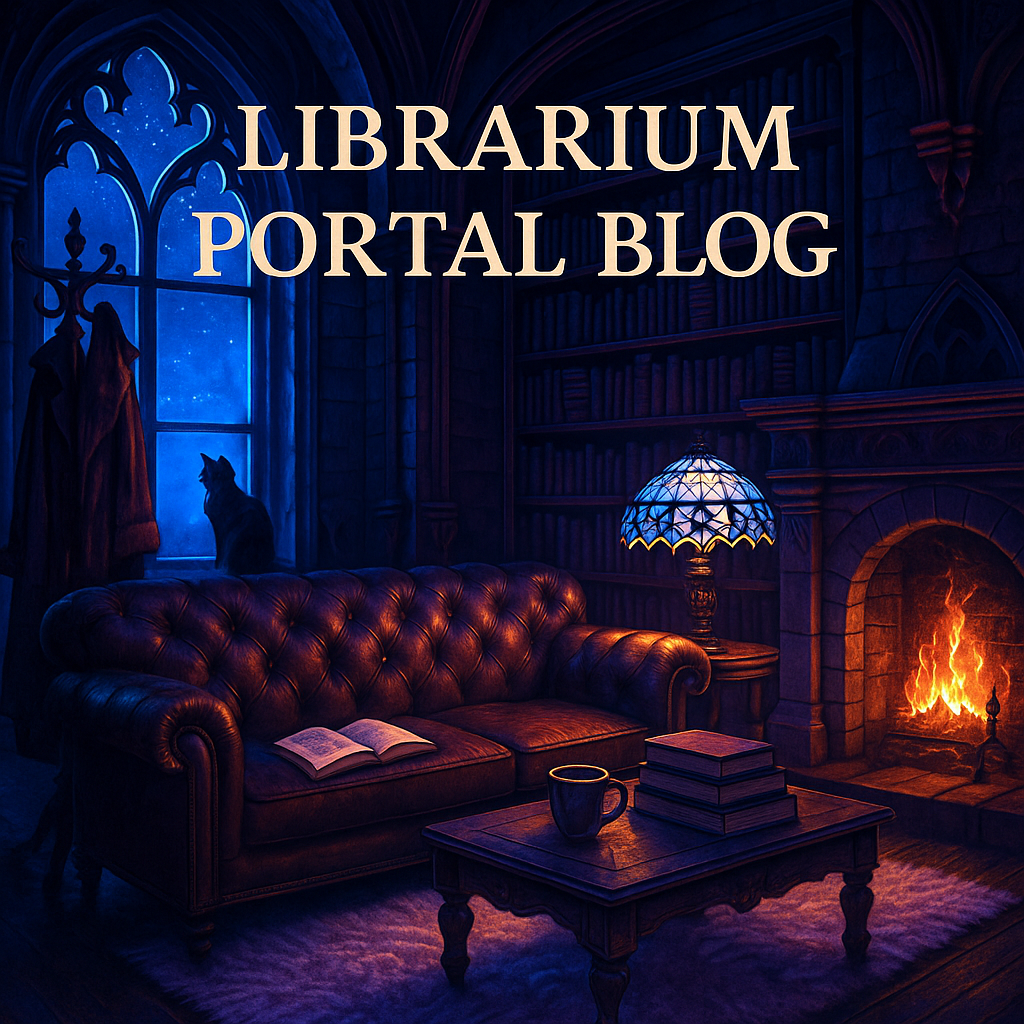Introduction
Welcome to the shadowed edge of romantic storytelling—where passion intertwines with peril, and love navigates through morally ambiguous terrain. Dark romance is not the soft-glow of candlelit dinners and happily ever afters (and other tropes); it is the genre that confronts the complexities of desire, obsession, power, and sometimes trauma.
In this blog post, we will explore 32 distinct sub-genres within dark romance—each one a variation on the theme of love that risks everything. From gothic castles and paranormal beings to organized crime, psychological manipulation, power-dynamics and moral ambiguity—you will gain a panorama of what spicy dark romance can look like. By the end of this guide, you’ll understand not only the distinguishing features of each sub-genre but how they relate to overarching themes such as taboo relationships, emotional catharsis, and the thrill of the forbidden.
Why such detailed mapping? Because dark romance appeals to readers seeking more than charming meet-cutes. It offers raw intensity, flawed characters, and settings that test boundaries. These stories ask big questions: What does love look like when stakes are life and death? How do power and vulnerability collide in the intimate space between two people?
Ahead of you lies a journey through 32 sub-genres—each complex, often unsettling, but deeply rooted in the human yearning for connection even in the darkest hours. Whether you are an author navigating this terrain or a reader drawn to the shadows in search of catharsis, this guide will serve as your map. Let us begin.

Understanding Dark Romance
In order to know where the sub-genres underneath the “dark romance” umbrella, we must first understand dark romance itself.
Definition of Dark Romance
Dark romance is a sub-genre of romantic fiction that explores the psychological, emotional, and moral complexities of love through narratives involving danger, obsession, trauma, or moral ambiguity. Unlike traditional romance, where the focus is on mutual affection and emotional security, dark romance centers on relationships that challenge ethical boundaries and confront the darker aspects of human desire, power, and redemption.
At its core, dark romance asks what happens when love becomes entwined with fear, control, or forbidden longing. The emotional intensity of these stories often stems from the interplay between attraction and peril—where characters face extreme circumstances that blur the line between victim and lover, danger and devotion. While such works may include explicit or violent themes, they ultimately revolve around consent, transformation, and emotional resolution, even when the ending is unconventional or tragic.
Core Characteristics
• Moral Ambiguity: Protagonists often act from morally gray motivations, challenging conventional definitions of good and evil.
• Emotional Intensity: The tone is passionate and high-stakes, creating psychological tension that drives the narrative.
• Power Dynamics: Stories frequently explore dominance, submission, manipulation, or emotional control.
• Themes of Redemption: Love serves as a catalyst for healing, self-awareness, or destruction.
• Complex Protagonists: Heroes and heroines may be flawed, dangerous, or traumatized, yet remain sympathetic through vulnerability or inner conflict.
• Atmosphere: Settings often evoke danger, secrecy, or allure—ranging from gothic estates and criminal underworlds to dystopian worlds or paranormal realms.
Context within the Romance Genre
Dark romance diverges from standard romance by emphasizing emotional risk rather than emotional safety. Its purpose is not to glorify violence or control but to explore the psychology of love under extreme conditions. It appeals to readers interested in confronting taboo emotions, exploring trauma recovery, or engaging with fantasy scenarios where danger and desire coexist.
As the genre evolves, it now encompasses multiple sub-categories—such as mafia romance, gothic romance, psychological romance, paranormal dark romance, and captive romance—each blending danger with devotion in distinct ways.
Sub-Genres of Dark Romance
Dark romance encompasses an extraordinary range of subgenres, each offering a distinct emotional and narrative experience. Below is a comprehensive overview of 32 recognized branches within this shadowy spectrum of romantic fiction.
1. Action & Adventure Romance
Combines high-stakes physical danger with emotional tension. Lovers are thrown together amid peril—think mercenaries, spies, or fugitives navigating gunfire, betrayal, and passion.
2. African-American Romance
Centers the experiences, voices, and cultural realities of Black protagonists, often exploring identity, systemic barriers, and deep emotional resilience within romantic contexts.
3. Anthologies & Collections Romance
Short-form dark romance stories collected in one volume. They allow exploration of multiple pairings, tones, or tropes—from tragedy to triumph—within a unified thematic frame.
4. Clean & Wholesome Romance
Focuses on moral integrity and emotional connection rather than explicit content. Even when darkness is present, redemption, faith, and emotional growth dominate the narrative.
5. Contemporary Romance
Set in the modern world, this subgenre confronts realistic dilemmas—mental health, power imbalance, trauma, or taboo attraction—within recognizable cultural settings.
6. Fantasy Romance
Blends magic, myth, and supernatural conflict. Lovers may be witches, warriors, or gods navigating curses, kingdoms, or forbidden powers amid epic moral tension. This sub-genre more recently has been known as “Romantasy” (romance fantasy or romantic fantasy).
7. Gothic Romance
Rooted in atmosphere and psychological mystery. Expect haunted estates, tragic secrets, and emotionally tormented lovers. It’s the birthplace of many dark romance aesthetics.
8. Historical Romance
Set in past eras, often Victorian or medieval, where social constraints amplify the emotional and moral stakes. Power, propriety, and passion collide in rigid hierarchies.
9. Holidays Romance
Dark interpretations of festive seasons—loneliness, grief, or forbidden encounters beneath the guise of celebration. The contrast between light and shadow drives the plot.
10. Inspirational / Christian Romance
Explores faith under duress. While often clean, dark versions involve moral crisis, temptation, and spiritual struggle as catalysts for redemption and love.
11. LGBT Romance
Centers queer love stories that may challenge societal norms or internalized shame. Darkness can stem from secrecy, identity conflict, or the fight for acceptance. Also termed LGBTQIA+, or in Canada 2SLGBTQIA+ (2 Spirit, Lesbian, Gay, Bi-sexual, Trans, Queer, Intersex, and Asexual, with the + signifying all other identities not covered by the letters).
12. Medical Romance
Set within hospitals or medical crises, these stories merge healing and heartbreak. Power dynamics and ethical dilemmas make them rich ground for emotional intensity.
13. Military Romance
Explores the discipline, trauma, and loyalty of soldiers. Themes of sacrifice, survival, and post-war reintegration infuse these love stories with moral complexity.
14. Multicultural & Interracial Romance
Navigates love across cultural, racial, or religious divides. Darkness arises from prejudice, identity loss, or societal tension that challenges the couple’s resilience.
15. Mystery & Suspense Romance
Romance entwined with crime, deception, or psychological danger. The tension of solving a mystery parallels the characters’ pursuit of emotional truth.
16. New Adult & College Romance
Centers characters aged 18–25 confronting trauma, sexuality, and self-discovery. These stories often blend coming-of-age themes with emotional volatility and moral testing.
17. Paranormal Romance
Features vampires, demons, witches, and other supernatural entities. Power, immortality, and human fragility intertwine, creating potent emotional and erotic tension. Paranormal romance also has a plethora of sub-genres associated with it.
18. Regency Romance
Set in early 19th-century England, where societal rules clash with desire. Darker entries explore class oppression, forbidden love, and the psychological costs of repression.
19. Romantic Comedy
Even humor can turn dark. These stories balance levity and irony against deep emotional wounds, trauma, or the absurdity of love under pressure.
20. Romantic Suspense
Merges romance and thriller structures. Lovers are forced to trust each other amid conspiracy, murder, or abduction, testing their emotional and physical limits.
21. Science Fiction Romance
Set in futuristic or dystopian worlds, where technology and human emotion collide. Themes of control, identity, and autonomy define this speculative darkness.
22. Sports Romance
Explores obsession, performance pressure, and personal redemption. Dark variations delve into injury, addiction, or toxic ambition shaping the relationship dynamic.
23. Time Travel Romance
Love across timelines—where destiny, regret, or tragedy intertwine. Often darkened by the impossibility of permanence or the cost of altering fate.
24. Western Romance
Rugged landscapes, isolation, and justice on the frontier. Dark versions include outlaw love stories, revenge, and survival in morally harsh environments.
25. Young Adult Romance
Focuses on first love and self-discovery under intense emotional strain. The darker spectrum involves grief, abuse, or rebellion against authority and expectation.
26. Victorian Era Romance
Characterized by restraint and repression. Beneath its decorum lie obsessions, secrets, and forbidden desires that subvert societal ideals of purity.
27. Steampunk Romance
Blends Victorian aesthetics with speculative technology. Dark steampunk romances explore the ethics of invention, industrial power, and class rebellion through love.
28. Dystopian Romance
Set in oppressive societies or post-apocalyptic worlds. Lovers resist tyranny or moral decay, making intimacy both rebellion and survival.
29. Billionaire Romance
Centers wealth and control dynamics. Dark iterations emphasize obsession, manipulation, and the corrupting influence of privilege.
30. Mafia Romance
Love in a world of crime and loyalty. Power, danger, and moral duality define this subgenre, often pairing vulnerability with brutality.
31. Omegaverse Romance
Originating from fanfiction, this speculative erotic framework uses biological hierarchies (alpha, beta, omega) to explore dominance, submission, and identity in primal terms.
32. Witch / Shifter / Paranormal Creature Romance
A crossover of fantasy and paranormal, exploring instinct, transformation, and forbidden mating bonds. Darkness arises from the collision of humanity and animalistic power. Some paranormal creatures can also be considered Cryptid Romance, Supernatural Romance, Mystical Creature Romance, Shadow Beings or Shadow Hunters, or even Monster Romance.
Conclusion
These 32 subgenres reveal how “dark romance” is not a single category but a constellation of emotional intensities. Whether set in gothic castles, dystopian futures, or the modern underworld, each variation illuminates how love endures—and sometimes destroys—when entangled with darkness.

Leave a Reply
You must be logged in to post a comment.